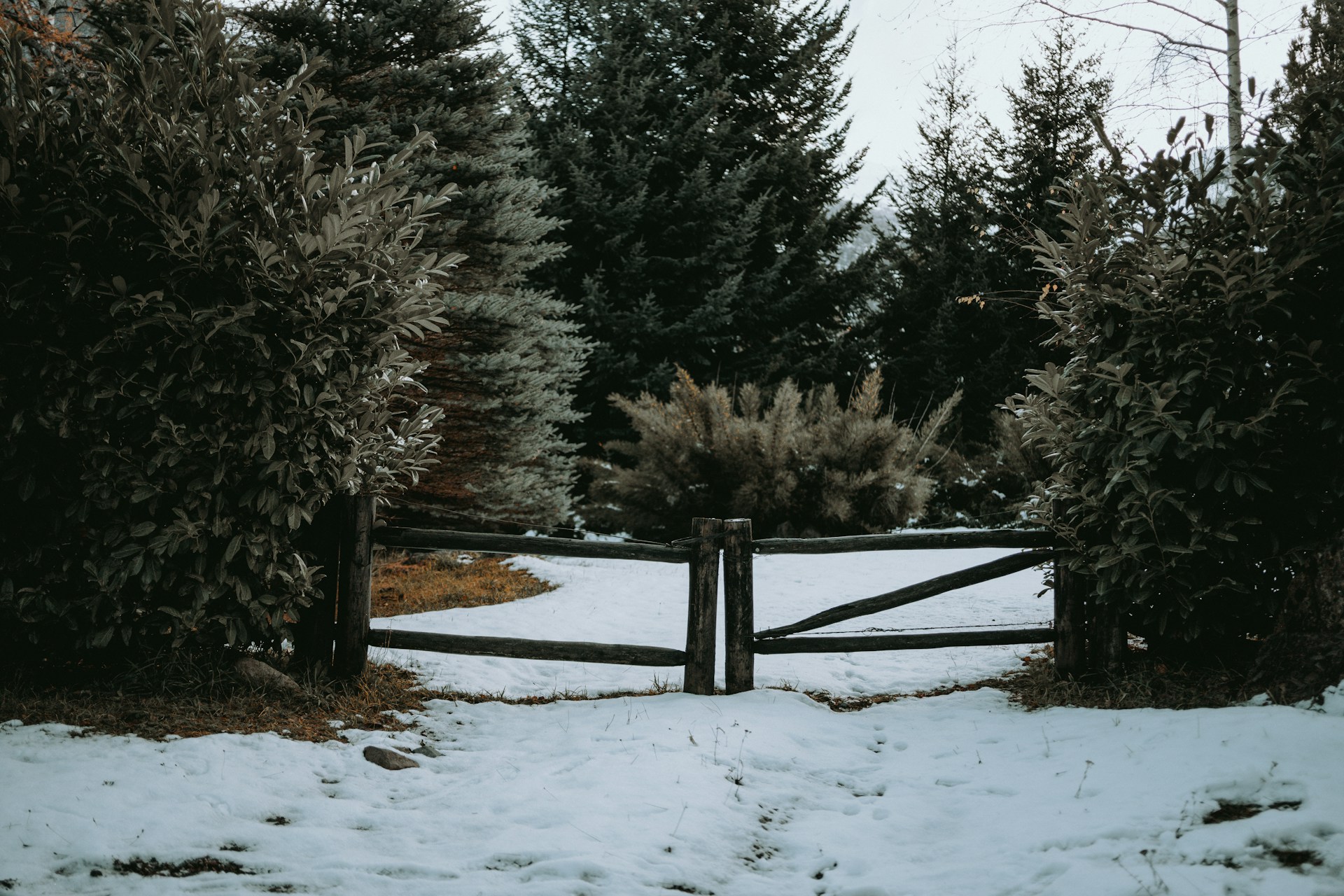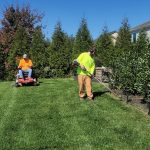Winter poses challenges for even the most well-kept gardens and landscapes. Frost, snow, and ice can wreak havoc on plants and outdoor spaces, leading to damage that often lasts well into the spring. Homeowners might feel overwhelmed by these seasonal changes and unsure of how to tackle these problems effectively.
But don’t worry; knowing how to identify common winter landscaping problems and their solutions can make a huge difference. Understanding potential issues like frost damage, snow accumulation, and salt impact allows you to take proactive steps in preserving your landscape.
Whether it’s implementing preventative techniques, properly caring for snow-covered areas, or maintaining soil health, each solution plays a part in keeping your outdoor space vibrant throughout the colder months. By focusing on the right strategies, you ensure your garden’s beauty and health not only survive but thrive in winter’s toughest conditions.
Identifying Frost Damage and Prevention Techniques
Frost can sneak up on your plants, causing wilted leaves, discolored foliage, and even death in some cases. Identifying frost damage early can help you take corrective measures. Look for blackened or brown leaves and drooping stems, which are telltale signs that frost has affected your garden.
Preventing frost damage starts with preparation. One effective measure is covering plants with burlap or frost cloths during cold nights. These materials act like a protective blanket, reducing the impact of sudden temperature drops.
Moving potted plants to a sheltered location is another preventive step. Place them near walls or under awnings for extra protection. This helps keep the chill off their roots and reduces exposure to harsh winds.
Watering your plants before a frost can also be beneficial. Moist soil retains heat better than dry soil, so watering helps keep the root zone warmer. Just make sure the water doesn’t freeze on the plants themselves, as ice can cause damage.
You might also consider using mulch around the base of plants. Mulch acts as insulation, keeping the ground around plant roots from freezing. This added layer of protection ensures that even if the tops of plants are affected, the roots remain viable.
Dealing with Snow and Ice Accumulation
Snow and ice accumulation can be a double-edged sword for your landscape. While a blanket of snow can insulate plants, heavy layers of snow and ice may crush or break fragile branches. Dealing with these conditions takes some careful strategies.
First, gently brush off excess snow on branches using a broom. Avoid shaking branches, as this can cause them to break. Removing some weight will prevent still-flexible limbs from being permanently damaged.
For icy buildup, consider applying a de-icing agent that’s safe for plants. Choose non-toxic options like sand or calcium magnesium acetate. These provide traction and help melt ice without harming your landscape.
Regularly check for ice dams on hardscapes like driveways or walkways. These can become hazardous and should be cleared promptly. You can also install heat cables in problem areas to prevent ice from forming.
When it comes to snow on lawns, avoid shoveling it into piles on garden beds. This can compact the soil and damage plant roots. Instead, try to spread it evenly across areas where extra moisture is needed.
By following these tips, you can effectively manage snow and ice accumulation, keeping your landscape intact and ready to flourish once the winter months have passed.
Addressing Salt Damage and Soil Health
Winter roads and walkways often get treated with salt to manage ice, but this can cause harm to your landscape. Salt harms plants by drawing moisture away from their roots, leading to dehydration. It can also alter soil structure, making it difficult for plants to uptake necessary nutrients.
Prevent salt damage by choosing calcium magnesium acetate as a safer alternative for de-icing. It’s less harmful to plants and keeps soil healthier. Also, make sure to shovel snow before it accumulates enough to require de-icing agents.
Create barriers around plants near driveways or walkways to protect them from salt splash. Burlap screens or plant-safe barriers can shield sensitive plants from airborne salt particles.
If salt exposure has already occurred, rinse the affected areas with fresh water as soon as possible. This dilutes salt concentration, reducing its impact on plant roots and soil.
To improve soil health, consider incorporating organic matter like compost or well-rotted manure. These amendments help bind salt and improve soil structure, making it easier for plants to absorb nutrients. Regular soil testing is also beneficial, ensuring you track salt levels and adjust care strategies accordingly.
Maintaining Plant Health During Cold Weather
Keeping plants healthy during winter requires careful attention and some strategic adjustments. Start by mulching plant bases. Mulch acts as insulation, retaining soil moisture and protecting roots from freezing.
Prune dead or damaged branches in late fall. This not only ensures the plant is compact and strong throughout the winter but also prevents ice and snow from accumulating on weak sections.
Water your plants adequately before the first freeze. This prepares them by ensuring they are well-hydrated, as plants often require less water during dormancy but still need it to function.
Consider using anti-desiccant sprays on evergreens. These products help reduce water loss from leaf surfaces, preventing winter burn. Additionally, arranging windbreaks can shield delicate plants from harsh winter winds.
Regularly check your landscape throughout the season. Remove any broken branches promptly and keep an eye out for signs of disease or pest issues that can still occur even in cold conditions.
These proactive steps in plant care ensure your landscape endures the winter months, ready to bounce back beautifully in spring.
Conclusion
Winter presents unique challenges, but with thoughtful strategies, your landscape can thrive. Understanding how to identify and tackle issues like frost damage, snow accumulation, salt exposure, and maintaining plant health ensures your garden remains resilient. By incorporating protective techniques and ongoing maintenance, you safeguard your plants and soil, supporting a robust landscape year-round.
Bright Green Landscapes Inc., a landscape contractor in Elgin, IL, offers expert advice and services to help you manage winter landscaping challenges effectively. Our team understands the complexities of seasonal changes and is ready to ensure your garden remains beautiful and healthy throughout the coldest months. Reach out to us today, and let’s work together to keep your landscape in top shape!







